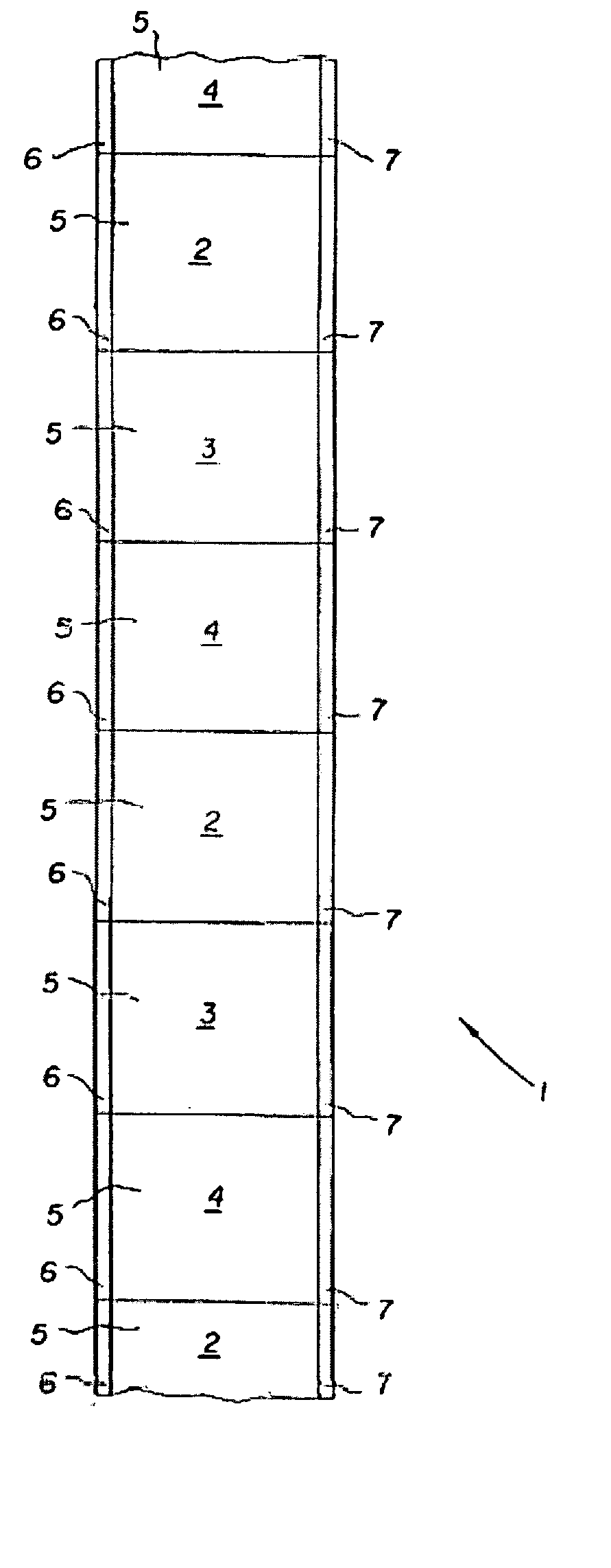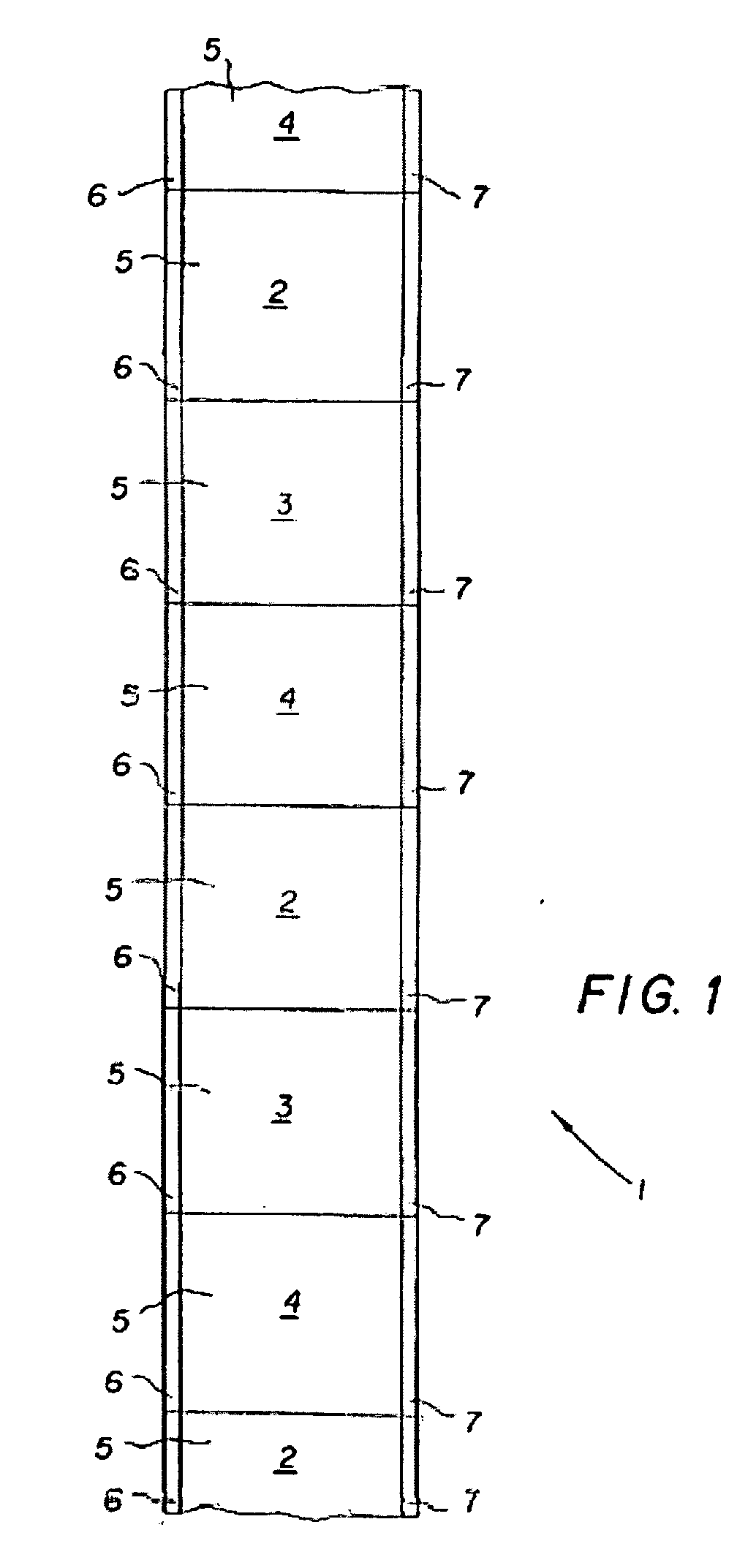Method of thermal printing
a thermal printing and ribbon technology, applied in the field of thermal printing, can solve the problems of unwanted lines in the transferred image, wrinkling of the ribbon, undesirable line artifacts, etc., and achieve the effects of reducing or eliminating the presence of print artifacts, reducing or eliminating wrinkling or crease of the thermal printing ribbon, and producing sharper images
- Summary
- Abstract
- Description
- Claims
- Application Information
AI Technical Summary
Benefits of technology
Problems solved by technology
Method used
Image
Examples
example 1
Young's Modulus
[0064] Two different types of nano-clay particles were used in this experiment. Laponite® RDS and Cloisite® Na+ were supplied by Southern Clay Products, Inc (Gonzales, Tex., USA). Laponite RDS is a synthetic hectorite of a fine white powder. Cloisite Na+ is a purified naturally occurring smectic silicate of a greenish yellow powder. Some of their properties are listed in Table 1. The aspect ratio, L / t, is defined as the ratio of the largest dimension to the smallest dimension of the clay particle.
TABLE 1Aspect ratioSurface areaType of clayL / tm2 / gLaponite RDS20-30370Cloisite Na+200750
Non-deionized gelatin of type 4, class 30, was used. The density of the gelatin was 1.34 g / cm3. The Young's modulus was 3.19 GPa.
[0065] An aqueous mixture of solid clay and gelatin was made in a 50° C. water bath using a high shear device. The mixture was coated on a clean poly(ethylene terephthalate) (PET) support using a coating knife of 40 mil clearance. The coating was chilled, th...
example 2
Thermal Dimensional Stability
[0070] A nanocomposite material used in this example was a commercial smectite clay-polypropylene master batch C.31 PS, supplied by Nanocor. The master batch C.31 PS was a mixture of a smectite clay functionalized with swelling and compatibilizing agents, and polypropylene. The master batch was diluted with additional amounts of polypropylene or poly(ethylene terephthalate) in a co-rotating twin-screw compounder to form various nanocomposite materials, which were formed into films. some with additional work, as follows: [0071] Sample 4—polypropylene, extruded; [0072] Sample 5—polypropylene with 10% C.31 PS by weight, extruded; [0073] Sample 6—polypropylene, extruded and biaxiallly stretched four times; [0074] Sample 7—polypropylene with 10% C.31 PS by weight, extruded and biaxiallly stretched four times; [0075] Sample 8—poly(ethylene terephthalate), extruded and biaxiallly stretched three times; and [0076] Sample 9—poly(ethylene terephthalate) with 4% C...
example 3
[0082] Changes in thermal conductivity are determined by measuring the thermal diffusivity of materials. Thermal diffusivity is related to thermal conductivity, and defined as the thermal conductivity of a material divided by the product of its specific heat and density. It is an important property for heat transfer. The flash method as set forth in standard test ASTM E1461-92 was used for thermal diffusivity measurements of a wide range of materials.
[0083] The thermal diffusivity of Samples 4 and 5 as prepared in Example 2 was measured using Holometrix μFlash according to the flash method, as set forth in ASTM El1461-92. The samples were prepared as circular disks with a diameter of 3 mm and a thickness of 0.795 mm. The diffusivity for Sample 4 was 6.16×10−8 m2 / s, while the diffusivity for Sample 5 was 8.216×10−8 m2 / s. The addition of 10% inorganic particles by weight increased the thermal diffusivity of the material by about 33%.
PUM
| Property | Measurement | Unit |
|---|---|---|
| Young's modulus | aaaaa | aaaaa |
| longitudinal elongation | aaaaa | aaaaa |
| transverse shrinkage | aaaaa | aaaaa |
Abstract
Description
Claims
Application Information
 Login to View More
Login to View More - R&D
- Intellectual Property
- Life Sciences
- Materials
- Tech Scout
- Unparalleled Data Quality
- Higher Quality Content
- 60% Fewer Hallucinations
Browse by: Latest US Patents, China's latest patents, Technical Efficacy Thesaurus, Application Domain, Technology Topic, Popular Technical Reports.
© 2025 PatSnap. All rights reserved.Legal|Privacy policy|Modern Slavery Act Transparency Statement|Sitemap|About US| Contact US: help@patsnap.com



